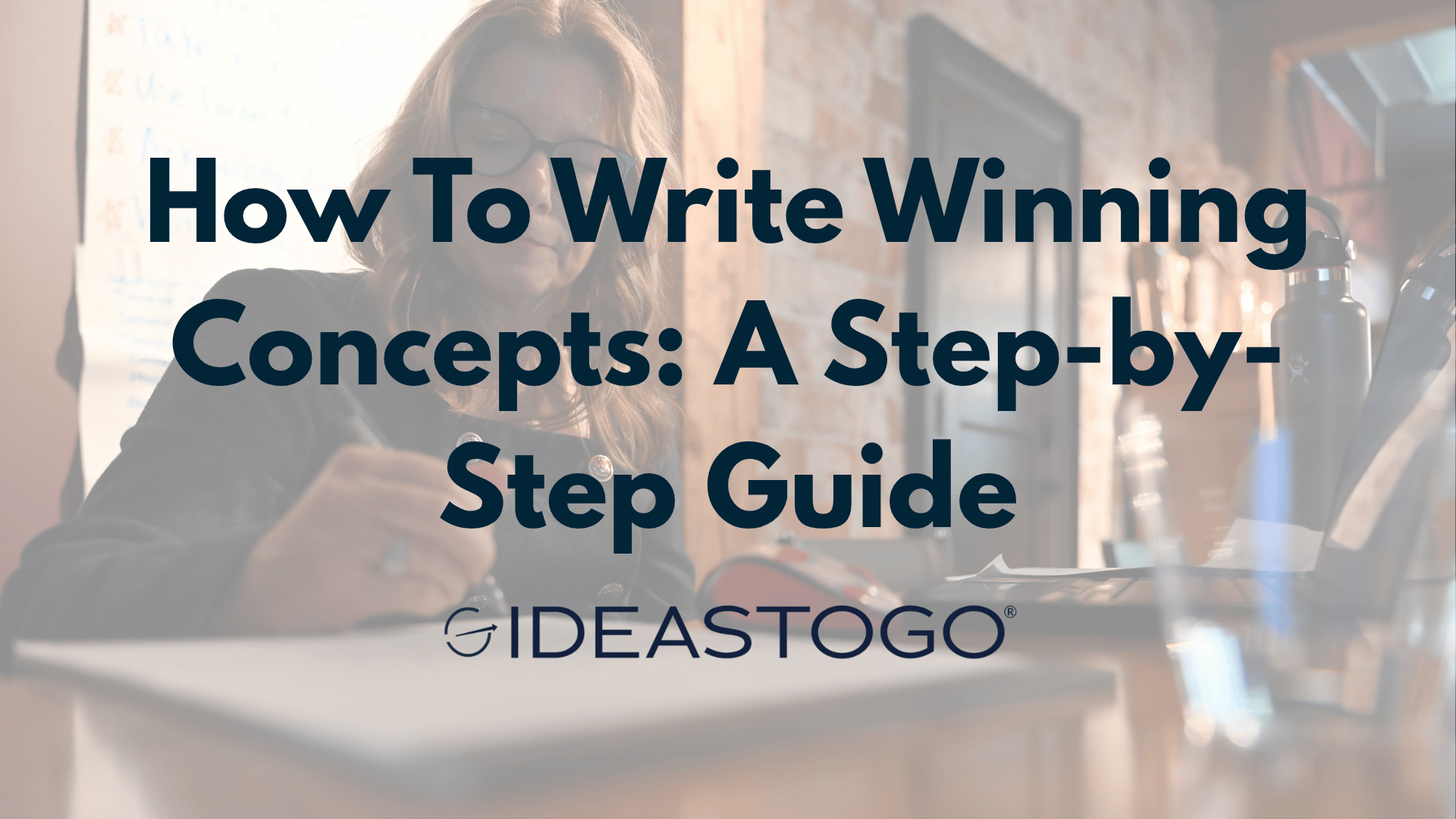How To Write Winning Concepts: A Step-by-Step Guide
Writing a well-developed concept is both an art and a science. The science lies in the formula—combining the right elements (Insight, Benefit, and Reason to Believe) to create a persuasive argument. The art comes from the language used to bring those elements to life and the process designed to get you there.
Sound easy? It rarely is.
The key to writing winning concepts comes down to understanding the anatomy of a strong idea and knowing how to assemble it. Whether you are drafting a new product concept or a positioning statement, the core formula remains the same.
The 3 Core Elements of a Concept
Every winning concept is built on three pillars. If one is weak, the entire concept can collapse.
Consumer Insight: The friction or truth in the consumer's life.
Key Benefit: The promise of what the consumer gets.
Reasons to Believe (RTBs): The proof that you can deliver on that promise.
1. Start with Killer Insights
What is a consumer insight?
An insight is not just a fact or a data point. It is a clearly stated, compelling belief or truth about your consumer’s life. It sets the context for why they need the product you’re about to introduce.
Think of the insight as the "premise" of your story. It establishes the tension that your product will resolve.
The Golden Rule of Insights:
A true insight is about the person, not the product.
Insight: "I often wonder if car mechanics are really looking out for my best interests." (About the person’s feeling).
Benefit: "I wish I had a personal mechanic to fix all my car problems." (About the solution/product).
The "Watchout": Avoid the "Wouldn't It Be Great" Trap
It’s easy to write an insight that starts with, “Wouldn’t it be great if….” But usually, what follows is a benefit disguised as an insight. If you find yourself writing this, ask: Why would that be great? The answer to that "Why" is your actual insight.
Sentence Starters for Strong Insights:
“I think…”
“I feel…”
“I believe…”
“It seems to me…”
If you read your insight aloud and others nod in agreement, you’ve found a winner.
2. Find Benefits that Motivate
The benefit is your promise to the consumer. It solves for the tension in the insight. When writing benefit statements, start with the phrase "I get…" (or "My baby gets," "My patient gets," etc., depending on whether you’re targeting the end-user or decision-makers).
Functional vs. Emotional Benefits
Should you lead with a rational (functional) benefit or a feeling (emotional) one?
Rational Benefits allow the consumer to "ladder up" to the emotional payoff in their own mind.
Emotional Benefits can hit hard but must be supported by strong proof (RTBs).
Often, the best approach is to start with a functional benefit and ask, "So what?"
Function: "This sponge has a scrubbing side." -> So what?
Benefit: "I get a sponge that cleans tough messes faster." -> So what?
Emotional Payoff: "I get out of the kitchen sooner so I can relax."
The Insights/Benefit “Duh” Concept Trap
Avoid concepts where the insight and benefit are identical.
Insight: "I need something to manage my GPS."
Benefit: "Now you get something to manage your GPS."
Verdict: Duh. This adds no value. Ensure your benefit creates a true release of the tension established in the insight.
3. Make Someone Believe (The RTBs)
Reasons to Believe (RTBs) are the proof points. They assure the consumer that they will actually get the promised benefit.
Common Types of RTBs:
Ingredients/Materials: "Made with 100% organic cotton."
Technology: "Patented moisture-lock technology."
Heritage/endorsements: "From the #1 Dermatologist Recommended brand."
Sensory cues: Appearance, sound, flavor, or texture.
Pro Tip: Be choosy. Don't kitchen-sink your RTBs. Select only the 3-5 proof points that specifically support the single benefit you are promising in that concept. If you have five different concepts, they should not all have the exact same list of RTBs—they should be tailored to support the unique angle (benefit) of each story.
The Writing Process: How to Build It
Don’t try to write a perfect paragraph in step one. Use this two-step process to save time and improve quality.
Step 1: The Skeleton (Outline)
Write your concept in outline form first.
Insight: [Insert Belief]
Benefit: [Insert Promise]
RTBs: [List 3-5 Proof Points]
Check the flow. Does the benefit answer the insight? Do the RTBs prove the benefit? If the logic holds, move to step two.
Step 2: The Meat (Full Concept)
Now, write it in full sentences and tie everything together. "Romance" the language without overdoing it.
If it's food, make it mouth-watering.
If it's a cleaning product, make it sound powerful.
Edit ruthlessly: Challenge yourself to cut the word count by 25%. Long, complicated concepts confuse consumers.
Final Quality Check
Read your concept aloud to someone who isn't working on the project. Ask them to tell you the main point. If they can’t give you a succinct answer immediately, keep editing.
Writing concepts is about clarity, not complexity. By methodically working through these elements—Insight, Benefit, and RTBs—you can ensure your ideas travel from your team's whiteboard to the consumer's cart.

